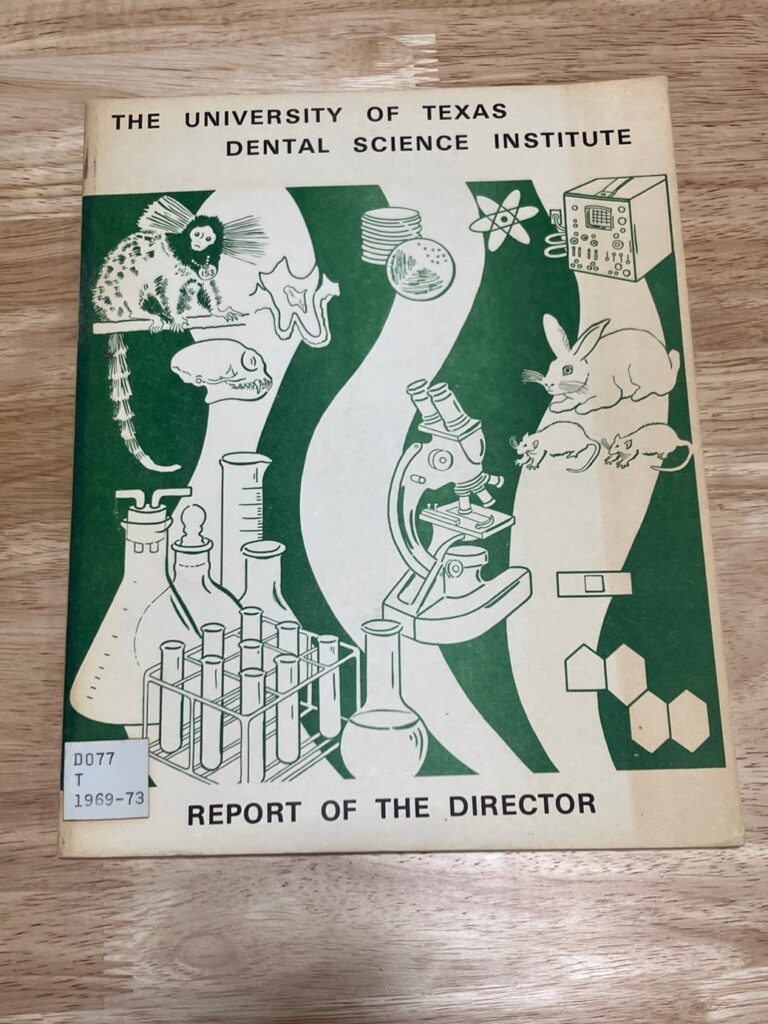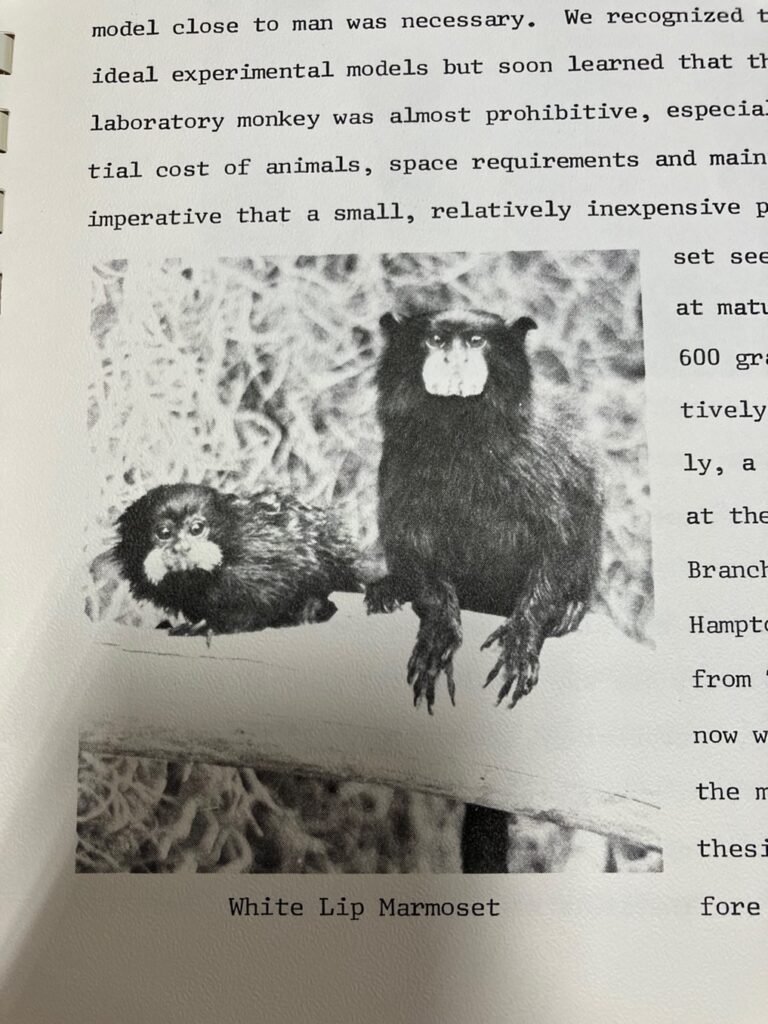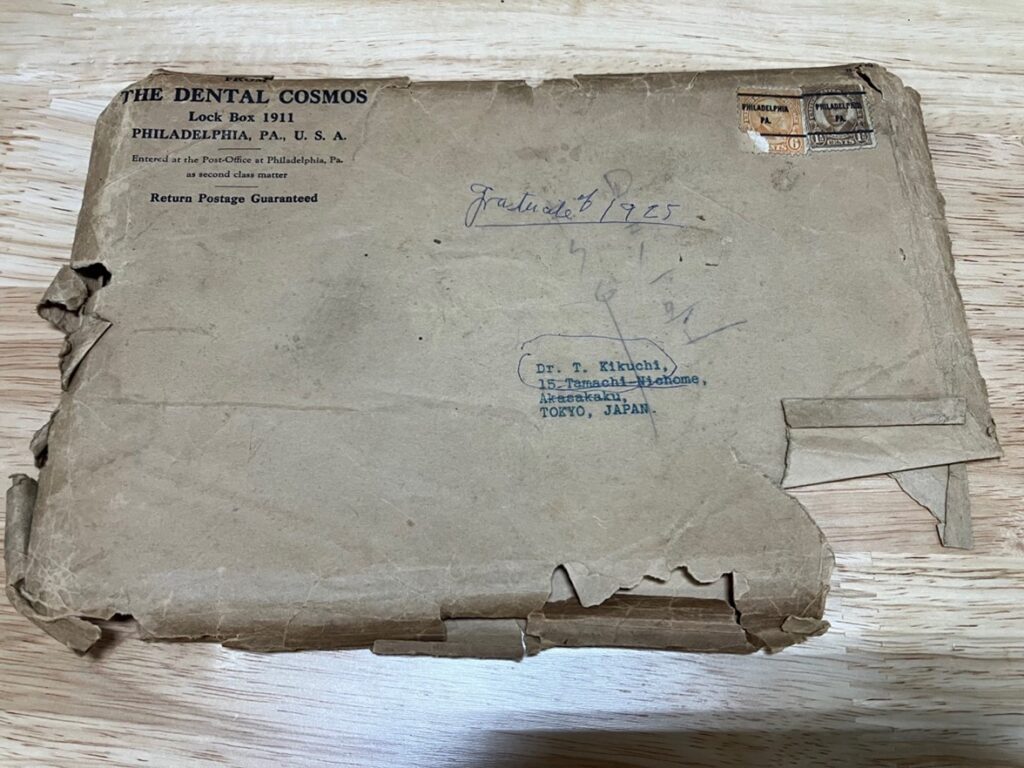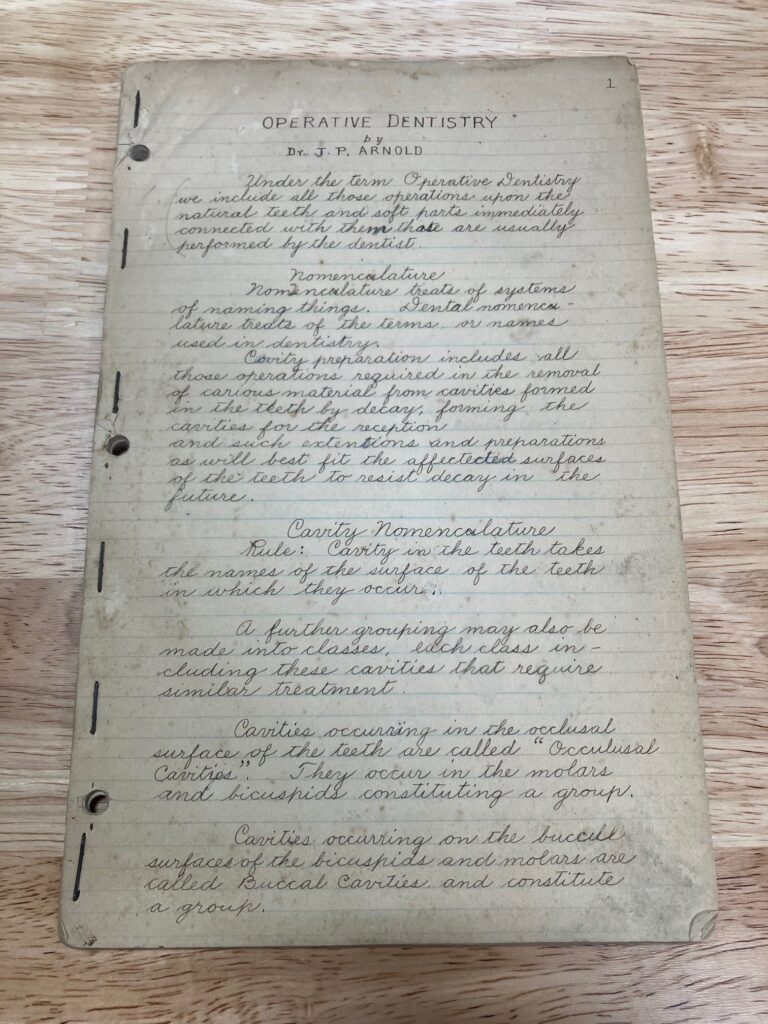By Johana Canales, Archives Intern.
The University of Texas Dental Branch records arrived at the McGovern Historical Center in 2010. Sometime after those records were processed and made available for research, a few more boxes made their way to the archives.
I had the pleasure of processing those boxes, now discoverable alongside the rest of the collection and identified as “Series VII: Addendum”. This series had around 6 boxes and was filled with administrative records, study guides, personal papers and other things dating from 1916-2002. I came across three laboratory notebooks and an envelope that really stood out to me and I think the stories within them are worth sharing.
Ledgers I, II, III
![Photograph of three Ledgers numbered I, II, III, dated 1933-1942. From Box 28, Folders 2, 3, 4, IC 009 University of Texas Dental Branch records, McGovern Historical Center, Texas Medical Center Library]](https://library.tmc.edu/mcgovern/wp-content/uploads/sites/5/2023/12/Ledgers-1024x767.jpg)
During processing, I came across three worn hardcover notebooks that spanned from 1933 to 1942. I soon realized that it belonged to someone who was working in a lab, with notes such as: “228-245 at 154 ‘ ‘ ?changed knives” (Ledger I , page 51). I came across other notes such as “specimen” and “monkey #1” (Ledger I , page 50). I connected the dots and, once I had gathered enough information over them, I quickly moved on to another item to process. As I kept processing, I came across The University of Texas Dental Science Institute: Report of the Director (1973), which highlighted UT Dental Branch’s “efforts to develop a unique institute for the study of oral biology” (page 2, Box 30, folder 14). Within it, I learned a little more about UT Dental Branch’s program areas, which included studying reactions to oral injury, biologic calcification, and oral ecology.

I loved how the cover page had illustrations of test tubes, beakers, microscopes, and atoms, which are all things that one typically imagines when they think of the word, ‘science.’ However, what caught my eye almost instantly was the image on the top left corner of a curious-looking monkey with a number “153” medal around its neck.

The report identified the monkey as a marmoset, a small South American primate often used for scientific research due to its capacity for developing teeth diseases that are similar to the ones humans develop. The marmoset played a huge role in the first five years of the opening of the Houston Dental Branch, serving as the base for much of their research and studies at that time (Progress Report, page 13).
Perhaps the monkeys mentioned in the ledger notebooks were not marmoset, but regardless, I grew a large appreciation for these creatures. The contribution of these primates to the growing understanding, prevention, and treatment of oral diseases within the UT Dental Branch is unmeasurable and important to highlight.
Class Notes addressed to Dr. Taketoshi Kikuchi

A worn envelope shipped from Philadelphia addressed to “Dr. Taketoshi Kikuchi” in Japan somehow made its way to Houston where a peculiar intern (me) got to process it. The envelope held a series of hand-written notes inside. At first glance, it looked like a handwritten book with the title of “Operative Dentistry” as its cover page with Dr. J.P. Arnold as its author. However, with further inspection, I found several other titles by different authors like “Dental Pathology” by Dr. Chas. H. Edge and “Exodontia” by Dr. Molt F.F. At this point, I realized these titles and names were most likely the topics of dental school classes and their lecturers. But then the question remained: who wrote the actual notes?

But discreetly tucked in between two sets of notes, I found two typed letters signed by the envelope’s recipient—Taketoshi Kikuchi himself. Mystery solved! (maybe).
In the first letter, titled “Graduation Address,” Kikuchi addresses his fellow classmates and talks about his obstacles with the English language while in school. It is a touching farewell with a mention of the Dental Branch’s motto at the time, “not for ourselves, but for others.” Box 6, Folder 18 from this same collection provides graduation information from 1923 which confirms that Taketoshi Kikuchi graduated from the Dental Branch that year along with other students, some of which were also from Japanese descent.
![Photograph of a typed gradation address by Dr. T. Kikuchi, May 20, 1925, Box 30, Folder 8, IC 009 University of Texas Dental Branch records, McGovern Historical Center, Texas Medical Center Library]](https://library.tmc.edu/mcgovern/wp-content/uploads/sites/5/2023/12/Graduation-Address-768x1024.jpg)
The second letter was written in 1932 and addressed to “S.S. Children of P.J.U.C.” Dr. Taketoshi Kikuchi addresses children living in Pasadena and speaks about the state of Japan at the time in a manner that is reflective and hopeful. He encourages the children to study Japanese more and visit their motherland, Japan, when they get the chance.
These hidden letters reveal a more intimate story behind the class notes by sharing some insights about their possible creator. Some mysteries still remain, however. How did these class notes end up in Philadelphia? Who kept them and who mailed to Dr. Taketoshi Kikuchi in Japan? And why were they brought back to the U.S. again? We currently do not have the answers to these questions but perhaps within these notes other questions may be answered.
The finding aid for Series VII: Addendum from the UT Dental Branch collection is now online and the series is available for research!
![[Cover page. Report of the Director, 1969-1973, Box 30, Folder 14, IC 009 University of Texas Dental Branch records, McGovern Historical Center, Texas Medical Center Library]](https://library.tmc.edu/mcgovern/wp-content/uploads/sites/5/2023/12/dental-report-big-1024x586.jpg)